Abstract
1. The influence of antifibrillatory agents on the release of previously accumulated 86Rb+ ions was studied in guinea-pig isolated left auricles, incubated in a K+-free Tyrode solution that contained an equivalent concentration (2.7 mM) of Rb+. The auricles were stimulated electrically at a frequency of 100/min and showed entirely “normal” mechanical behaviour in the incubation medium.
2. Quinidine, tetracaine, hexobarbitone-Na and propranolol caused a dose-dependent negative inotropic effect. The frequency of beating (100/min) was usually not affected by these drugs.
3. The reduction in contractile force was accompanied by a dose-dependent inhibition of 86Rb release. The concentration-response curves for both the mechanical effect and the influence on 86Rb release almost coincided for quinidine, although these curves diverged for the other drugs studied.
4. It is suggested that all the four different antifibrillatory drugs cause a general reduction of the membrane permeability to inorganic ions. The mechanism of this membrane stabilization remains unknown.
Full text
PDF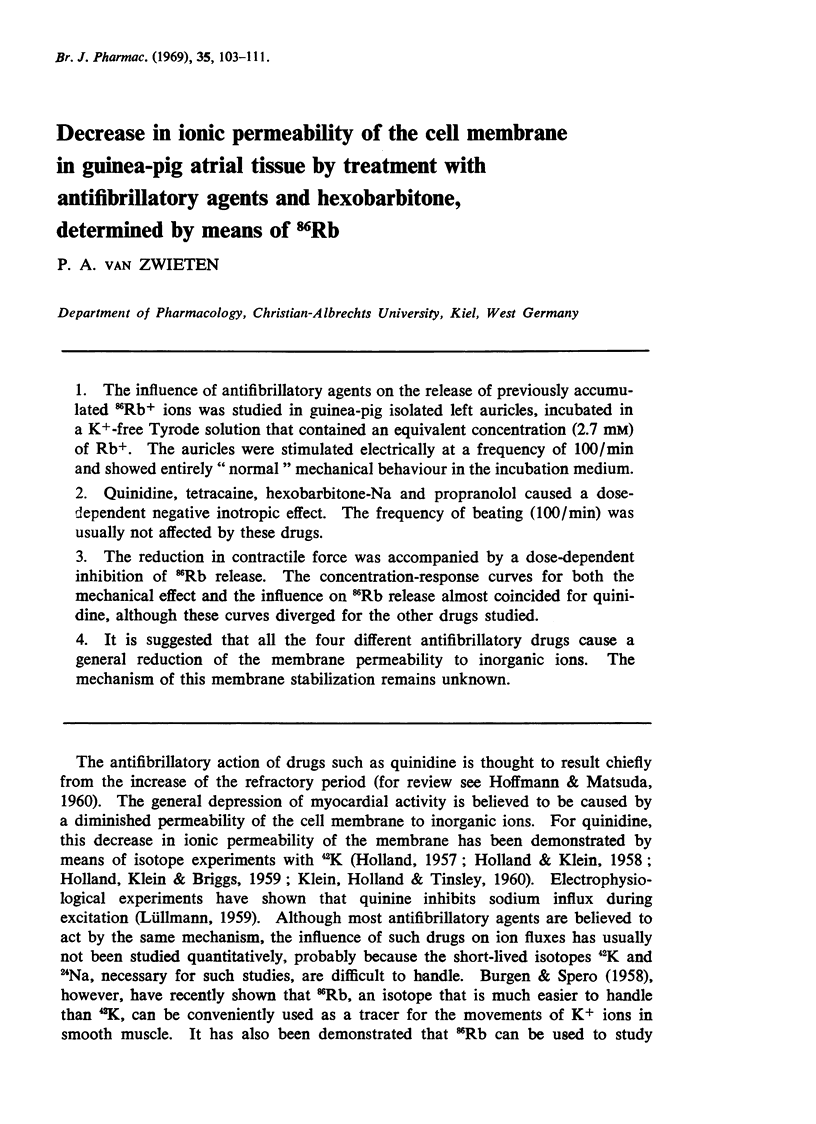
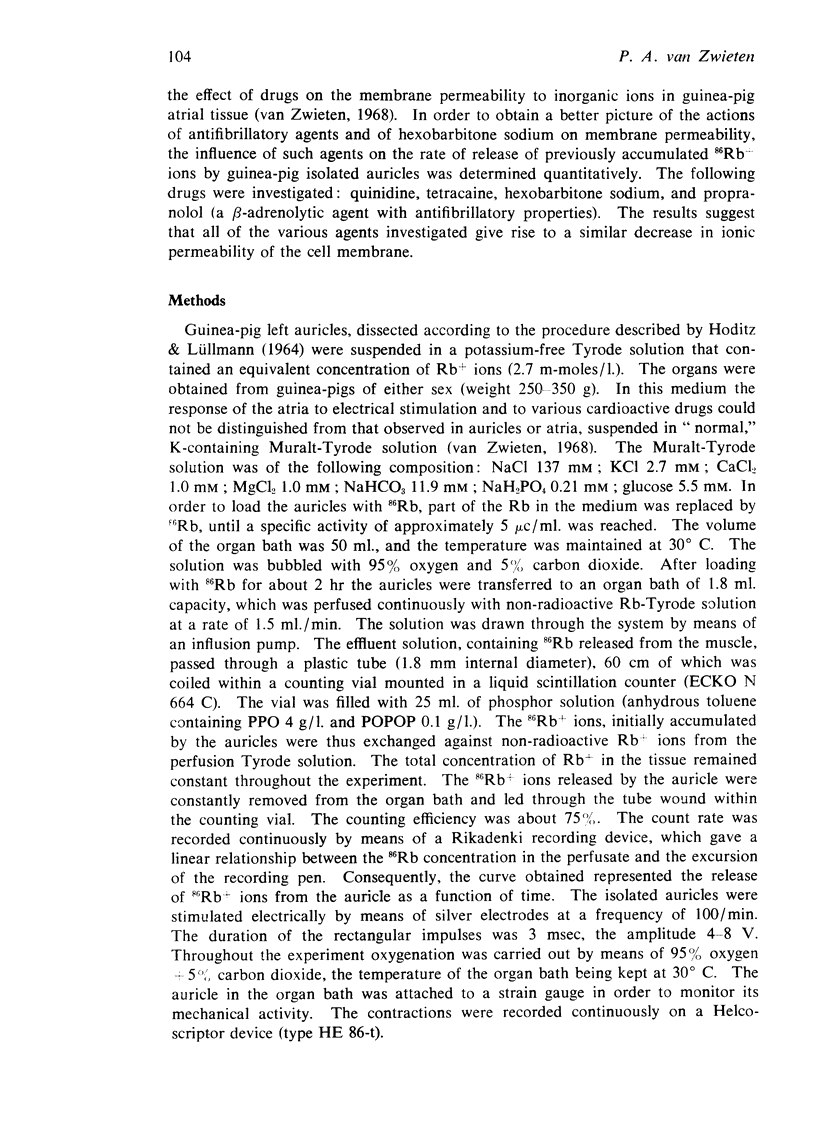
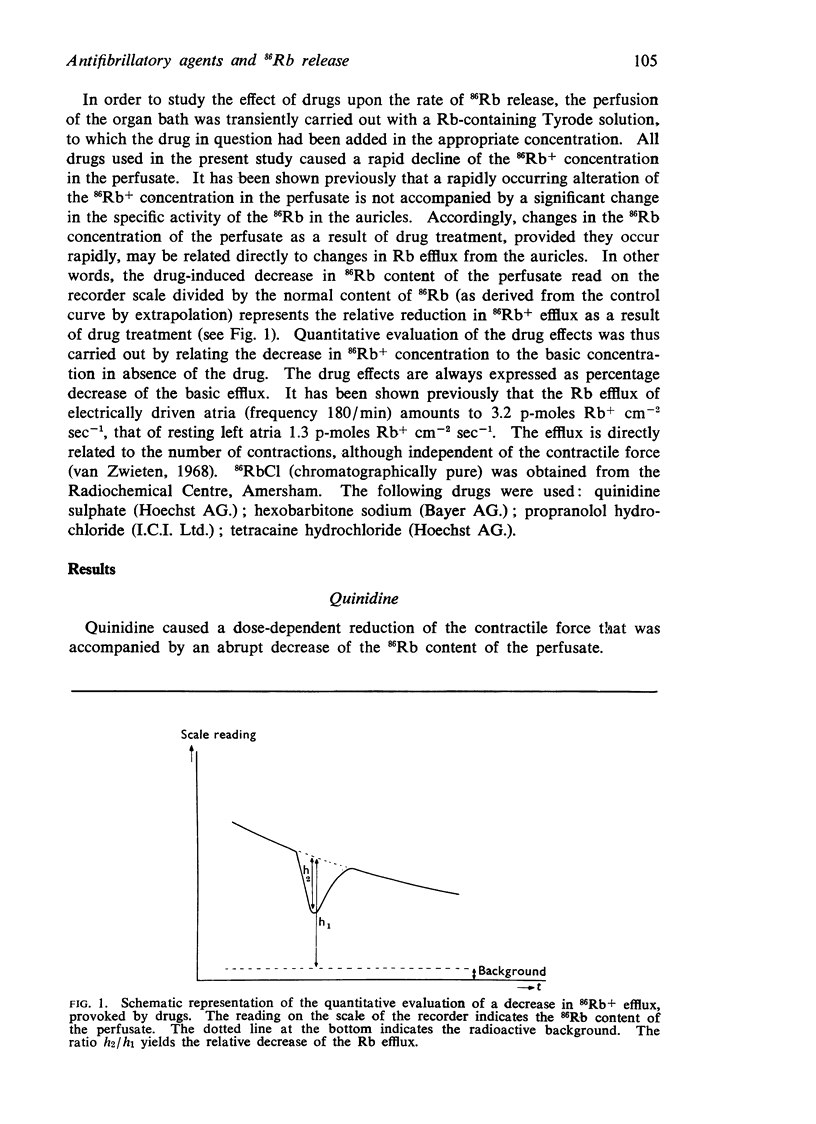
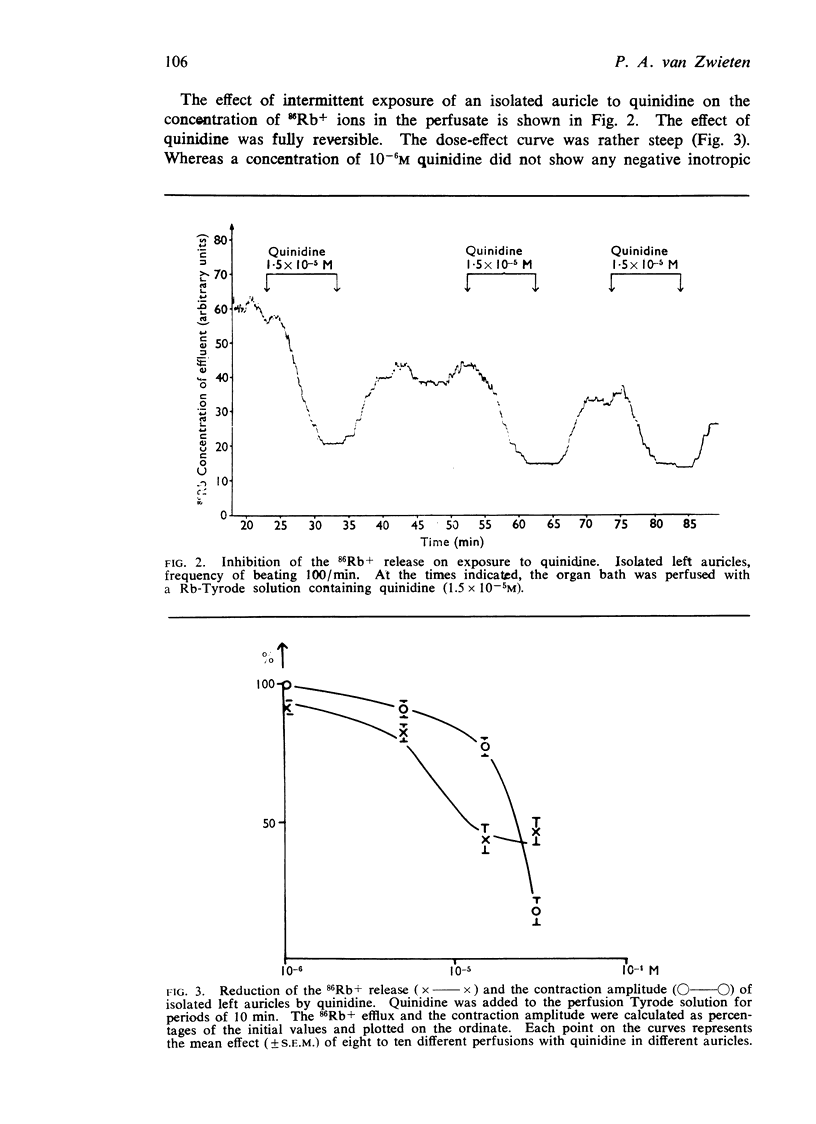
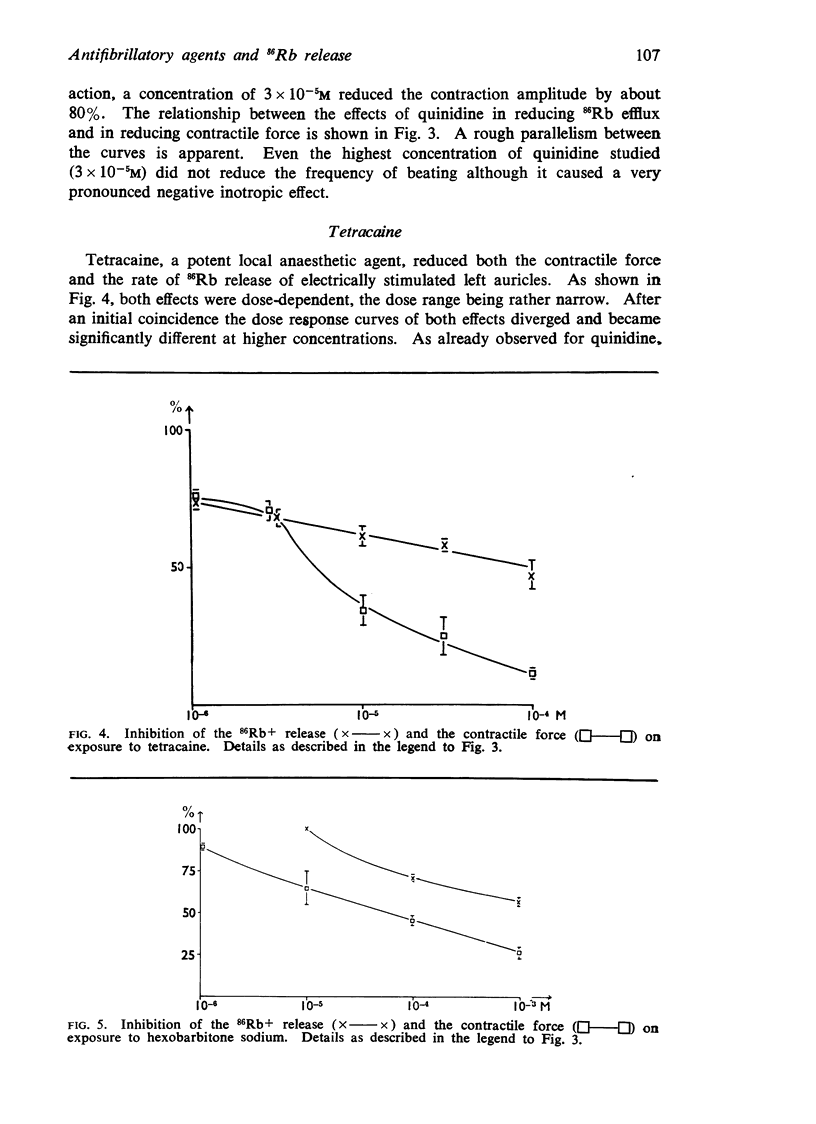
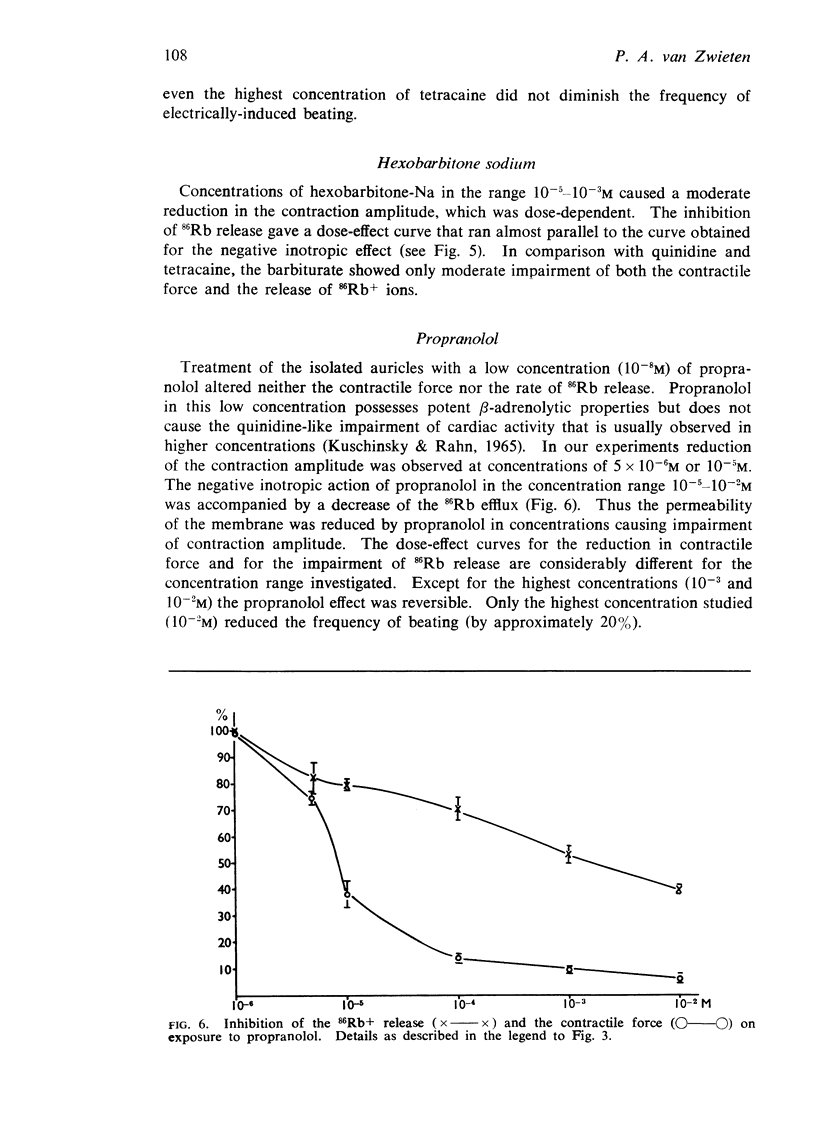
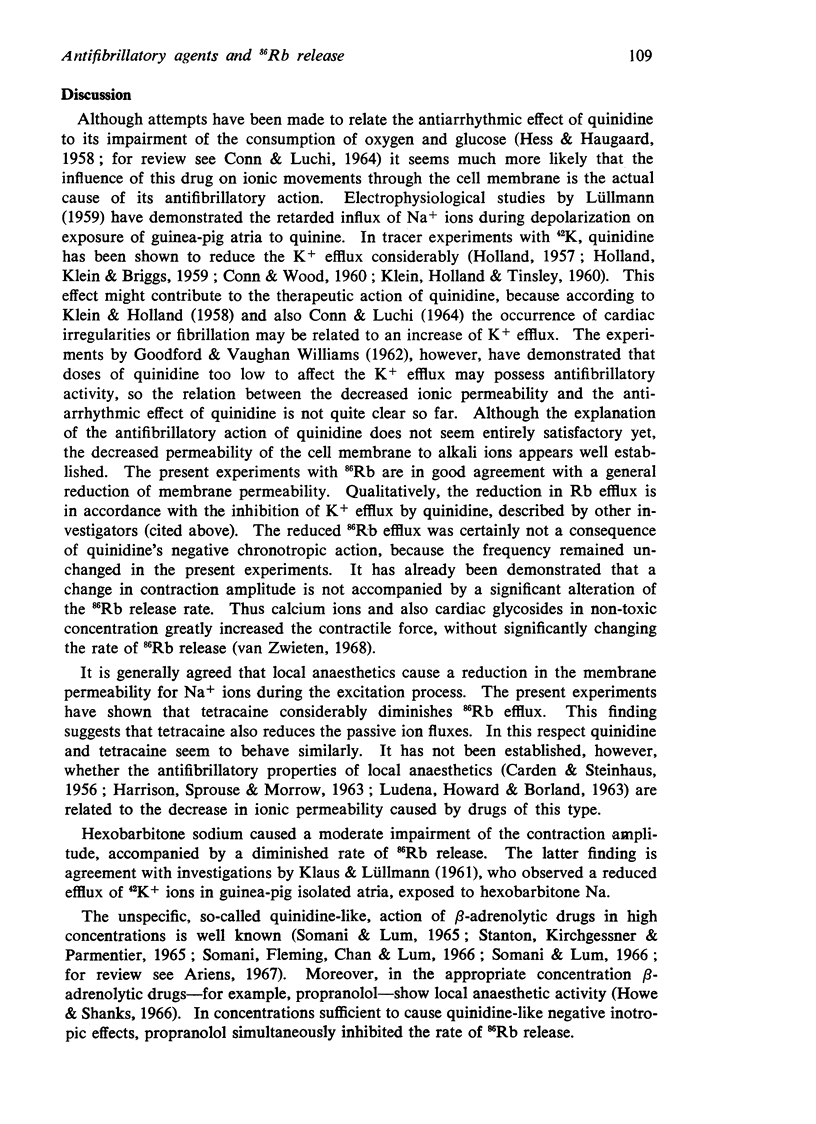
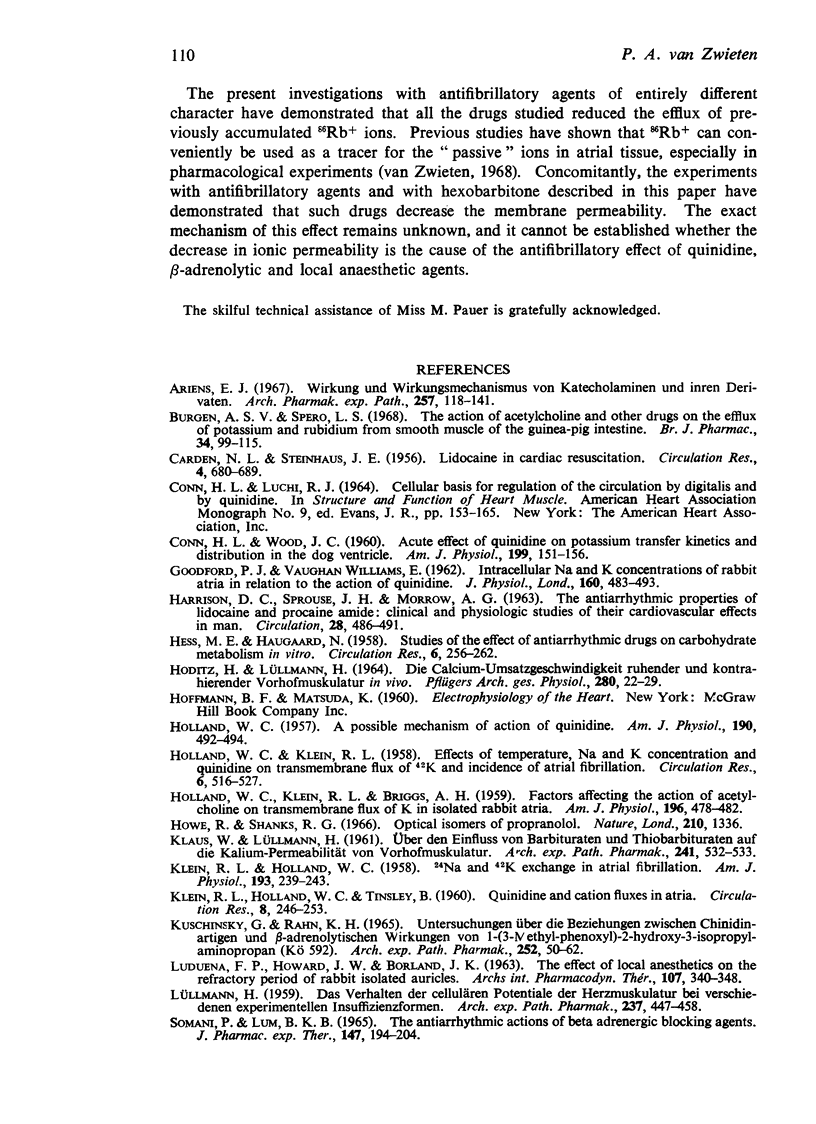
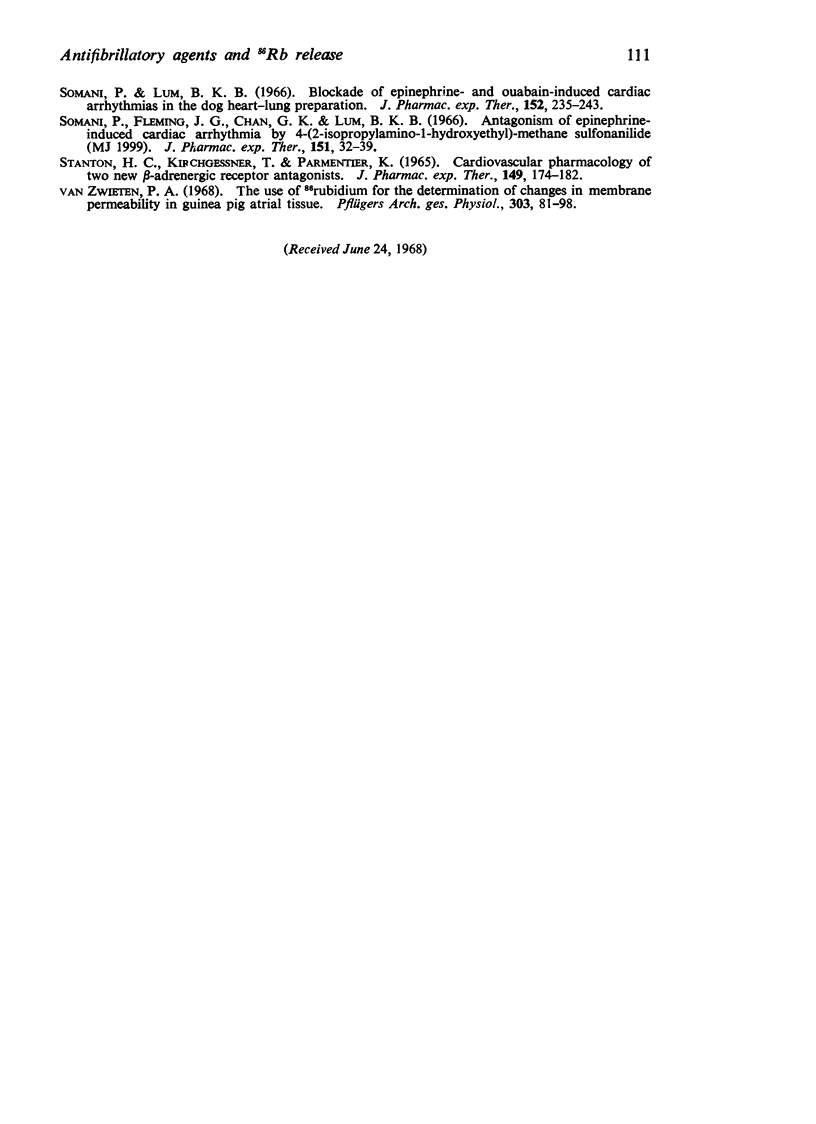
Selected References
These references are in PubMed. This may not be the complete list of references from this article.
- Ariëns E. J. Wirkung und Wirkungsmechanismus von Katecholaminen und ihren Derivaten. Naunyn Schmiedebergs Arch Exp Pathol Pharmakol. 1967;257(1):118–141. [PubMed] [Google Scholar]
- CARDEN N. L., STEINHAUS J. E. Lidocaine in cardiac resuscitation from ventricular fibrillation. Circ Res. 1956 Nov;4(6):680–683. doi: 10.1161/01.res.4.6.680. [DOI] [PubMed] [Google Scholar]
- CONN H. L., Jr, WOOD J. C. Acute effects of quinidine on K exchange and distribution in the dog ventricle. Am J Physiol. 1960 Jul;199:151–156. doi: 10.1152/ajplegacy.1960.199.1.151. [DOI] [PubMed] [Google Scholar]
- GOODFORD P. J., WILLIAMS E. M. Intracellular Na and K concentrations of rabbit atria, in relation to the action of quinidine. J Physiol. 1962 Mar;160:483–493. doi: 10.1113/jphysiol.1962.sp006861. [DOI] [PMC free article] [PubMed] [Google Scholar]
- HARRISON D. C., SPROUSE J. H., MORROW A. G. THE ANTIARRHYTHMIC PROPERTIES OF LIDOCAINE AND PROCAINE AMIDE. CLINICAL AND PHYSIOLOGIC STUDIES OF THEIR CARDIOVASCULAR EFFECTS IN MAN. Circulation. 1963 Oct;28:486–491. doi: 10.1161/01.cir.28.4.486. [DOI] [PubMed] [Google Scholar]
- HESS M. E., HAUGAARD N. Studies of the effect of antiarrhythmic drugs on carbohydrate metabolism of rat heart muscle in vitro. Circ Res. 1958 May;6(3):256–259. doi: 10.1161/01.res.6.3.256. [DOI] [PubMed] [Google Scholar]
- HOLLAND W. C. A possible mechanism of action of quinidine. Am J Physiol. 1957 Sep;190(3):492–494. doi: 10.1152/ajplegacy.1957.190.3.492. [DOI] [PubMed] [Google Scholar]
- HOLLAND W. C., KLEIN R. L., BRIGGS A. H. Factors affecting action of acetylcholine on transmembrane flux of K in isolated rabbit atria. Am J Physiol. 1959 Mar;196(3):478–482. doi: 10.1152/ajplegacy.1959.196.3.478. [DOI] [PubMed] [Google Scholar]
- HOLLAND W. C., KLEIN R. L. Effects of temperature, Na and K concentration and quinidine on transmembrane flux of K42 and incidence of atrial fibrillation. Circ Res. 1958 Jul;6(4):516–521. doi: 10.1161/01.res.6.4.516. [DOI] [PubMed] [Google Scholar]
- Howe R., Shanks R. G. Optical isomers of propranolol. Nature. 1966 Jun 25;210(5043):1336–1338. doi: 10.1038/2101336a0. [DOI] [PubMed] [Google Scholar]
- KLEIN R. L., HOLLAND W. C. Na24 and K42 exchange in atrial fibrillation. Am J Physiol. 1958 May;193(2):239–243. doi: 10.1152/ajplegacy.1958.193.2.239. [DOI] [PubMed] [Google Scholar]
- KLEIN R. L., HOLLAND W. C., TINSLEY B. Quinidine and unidirectional cation fluxes in atria. Circ Res. 1960 Jan;8:246–252. doi: 10.1161/01.res.8.1.246. [DOI] [PubMed] [Google Scholar]
- Kuschinsky G., Rahn K. H. Untersuchungen über die Beziehungen zwischen chinidinartigen und beta-adrenolytischen Wirkungen von 1-(3-Methylphenoxy)-2-hydroxy-3-isopropylaminopropan (Kö 592) Naunyn Schmiedebergs Arch Exp Pathol Pharmakol. 1965 Nov 4;252(1):50–62. [PubMed] [Google Scholar]
- SOMANI P., LUM B. K. THE ANTIARRHYTHMIC ACTIONS OF BETA ADRENERGIC BLOCKING AGENTS. J Pharmacol Exp Ther. 1965 Feb;147:194–204. [PubMed] [Google Scholar]
- Somani P., Fleming J. G., Chan G. K., Lum B. K. Antagonism of epinephrine-induced cardiac arrhythmias by 4-(2-isopropylamino-1-hydroxyethyl)-methanesulfonanilide (MJ 1999) . J Pharmacol Exp Ther. 1966 Jan;151(1):32–37. [PubMed] [Google Scholar]
- Somani P., Lum B. K. Blockade of epinephrine- and ouabain-induced cardiac arrhythmias in the dog heart-lung preparation. J Pharmacol Exp Ther. 1966 May;152(2):235–242. [PubMed] [Google Scholar]
- Stanton H. C., Kirchgessner T., Parmenter K. Cardiovascular pharmacology of two new beta-adrenergic receptor antagonists. J Pharmacol Exp Ther. 1965 Aug;149(2):174–182. [PubMed] [Google Scholar]
- van Zwieten P. A. The use of 86rubidium for the determination of changes in membrane permeability in guinea pig atrial tissue. Pflugers Arch. 1968;303(1):81–98. doi: 10.1007/BF00586829. [DOI] [PubMed] [Google Scholar]


